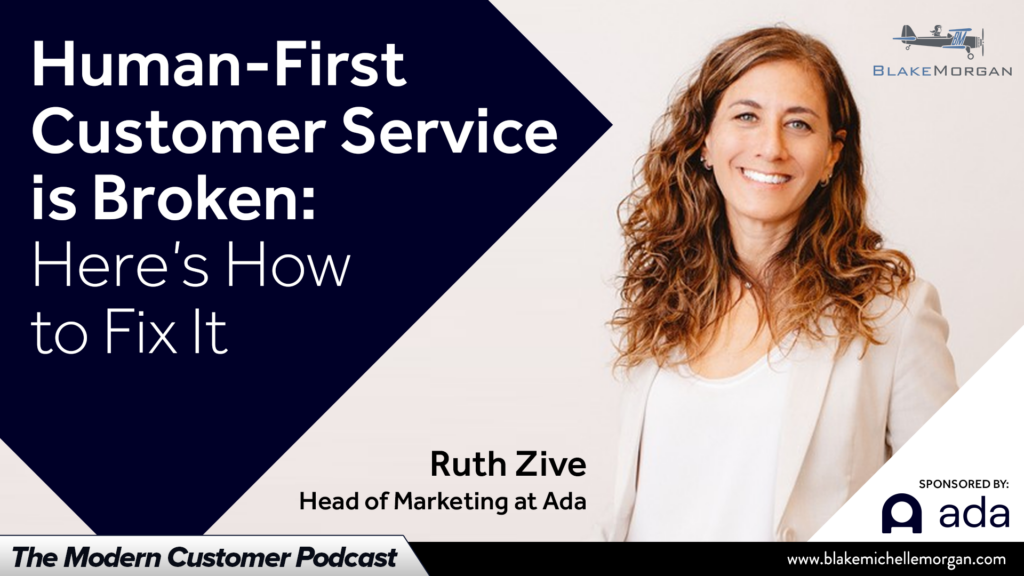Every modern customer is familiar with the basic customer service script. It’s often what they hear after waiting on hold and having to work through a phone tree, when what they really want is a quick answer to a question or a human to have an actual conversation with. Instead, they’re left with a frustrating interaction that takes too long and is ineffective.
According to Ruth Zive, head of marketing at automated customer service company Ada, human-first customer service is broken. Too often customers have to wait on hold only to get the runaround with questions and feedback that are irrelevant to their issues.
An automation-first strategy allows companies to use their humans wisely. Automating customer service doesn’t mean companies need to eliminate human support, but it does mean human employees can be better used. The vast majority of inquiries are repetitive—things like checking on an order status or tracking a package. These questions can easily be answered by automation in a way that is quicker and more convenient than waiting for a human employee. By automating the mundane questions, human representatives are then free to address the more complicated questions and the customer interactions that matter most. Automation cuts costs for simple queries and allows companies to deliver a truly human experience when it’s most needed.
Air Asia is one company that has made the transition to automation-first service. According to Zive, using a robust automation platform helped the company seamlessly transition during the COVID pandemic to be available to answer customer questions around the clock. Air Asia’s chatbot through Ada also empowers customers to do things like change their seats and order meals before their flights. If a customer needs a human, the escalation happens seamlessly. By adding automation-first service, Air Asia was able to cut its wait times from over an hour to less than a minute, leading to lower costs and higher customer satisfaction.
To get the benefits of automation without the overwhelm of transitioning an entire system at once, Zive recommends companies start by automating the 10 most frequently asked questions, which she says can lead to a 30% call reduction within 30 days. From there, companies can move on to automating more sophisticated questions and integrating back-end systems.
The key to a successful automated service strategy is to stay actively involved instead of just setting it up and moving on. Automation underpins an organization’s entire support strategy and requires updates and maintenance. Many successful companies have teams or entire departments dedicated to managing automated service.
Human-first customer service is outdated and inefficient. Companies need to turn to automation to increase customer satisfaction and reduce their costs. With a strategic automation system that combines convenient responses with quick escalation to humans when needed, customers can get the support they need and brands can best use their resources.
This post is sponsored by Ada. About our sponsor:
ADA is the leader in Automated Customer Experience with their easy to implement AI Chatbot Software. ADA was born with the understanding that live agents have more to contribute than responses to frequently asked questions; with an appreciation for customers’ preference for on-demand, self-service support; and with the knowledge that they could deliver a product that would offer a highly personalized and engaging opportunity for automation across the customer journey. Learn more at ada.support.
Blake Morgan is a customer experience futurist, keynote speaker and the author of the bestselling book The Customer Of The Future. Sign up for her weekly newsletter here.

